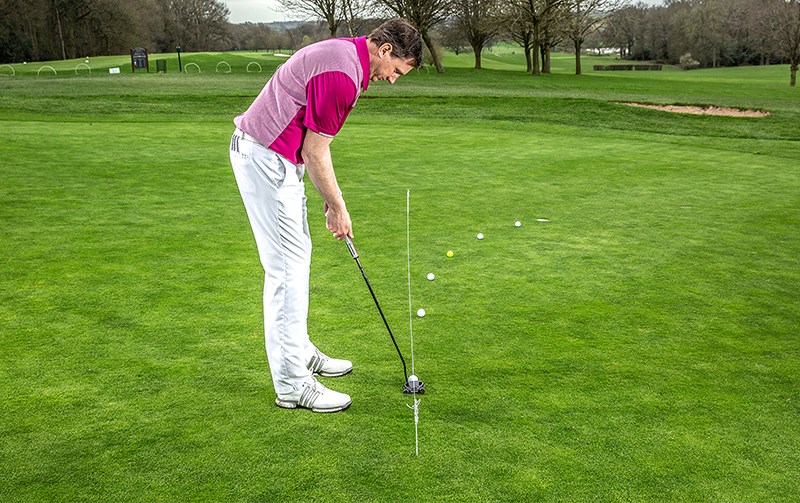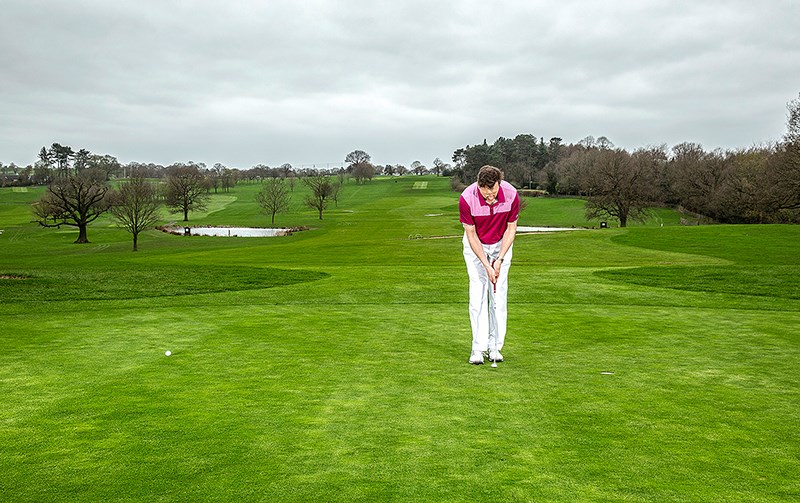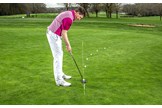A-Z Putting (R): Reading Greens
Published:
The importance of green reading: You will never hole putts unless you know how to assess greens properly
One of the biggest mistakes club golfers make is under-playing break and missing on the low side (the amateur side). Do that and gravity dictates that the ball never has a chance of catching the edge of the hole and going in. Instead, you need to shift your aim away from the apex (the high point of the break) and towards the start of the arc.
Practice Drill
Find a 15ft putt with substantial break and plot the apex. Starting the ball on this line (as shown by the yellow ball), hit a series of putts and note how gravity pulls the ball below the hole. To get the ball rolling on the high side, you need to visualise where the start of the arc is and get the ball running on that line, as shown by the string line.
Visualise The Finish
Try to simulate the last two or three feet of the putt by making a couple of practice putts close to the hole and visualising how the ball enters the hole. The ball will break the most when it starts to slow down, so consider this if you’re trying to die the ball into the hole. The optimum speed of a putt should nish 18 inches past the hole.

Need to Know: Rules Change
Under the new rules there is no longer a penalty for merely touching the line of play on the putting green. But a player is still subject to the prohibition on improving his or her line of play on the putting green (see rule 8.1a).


